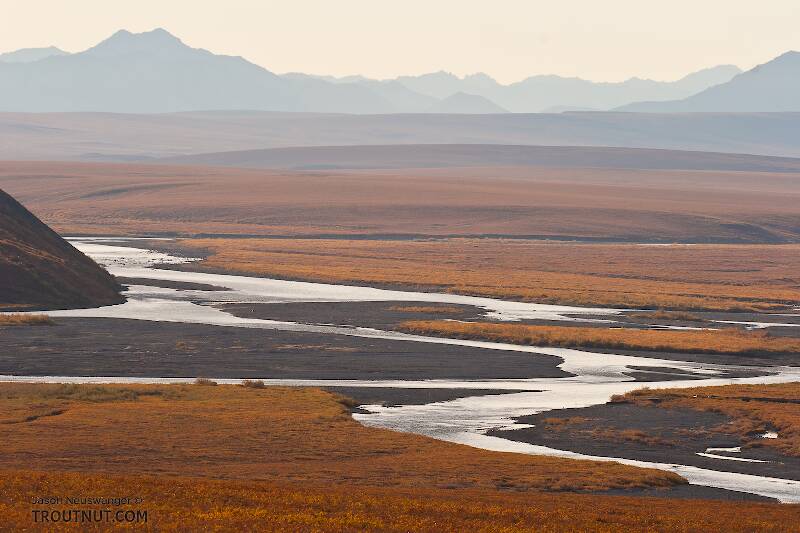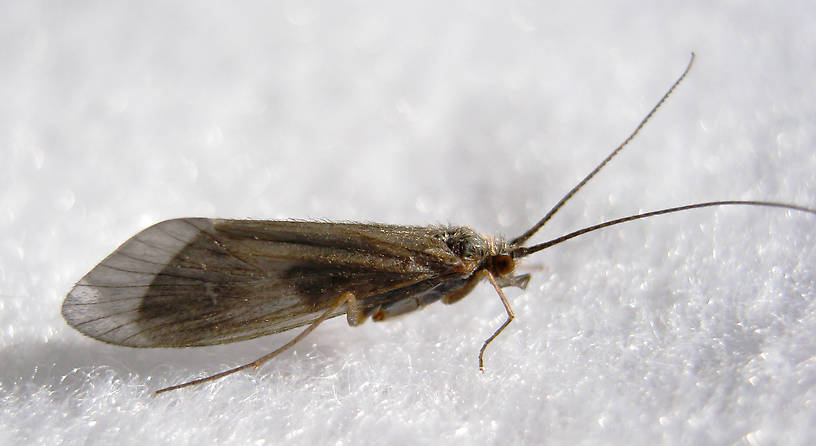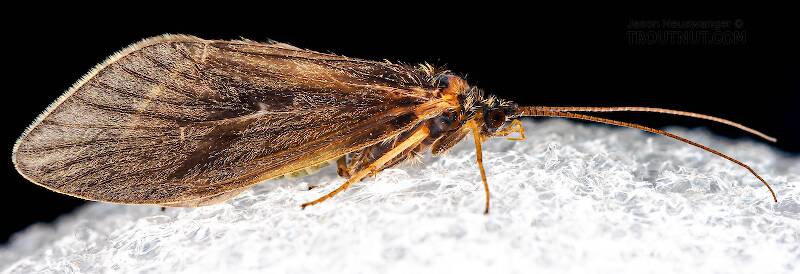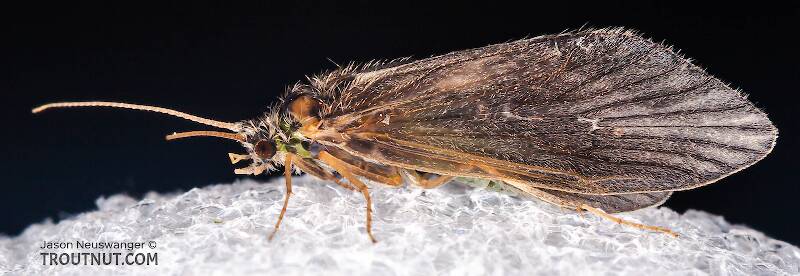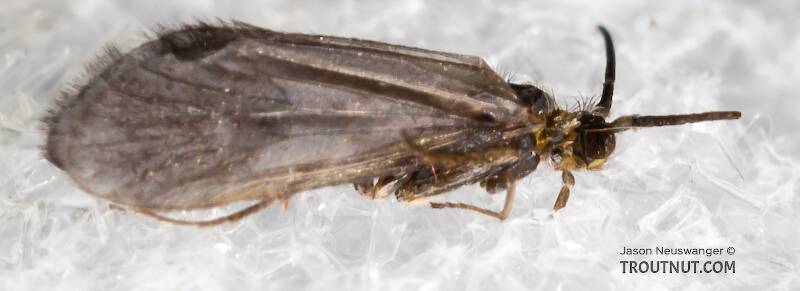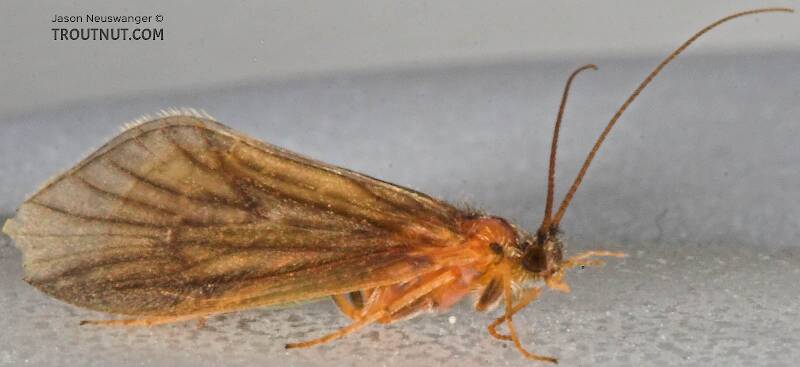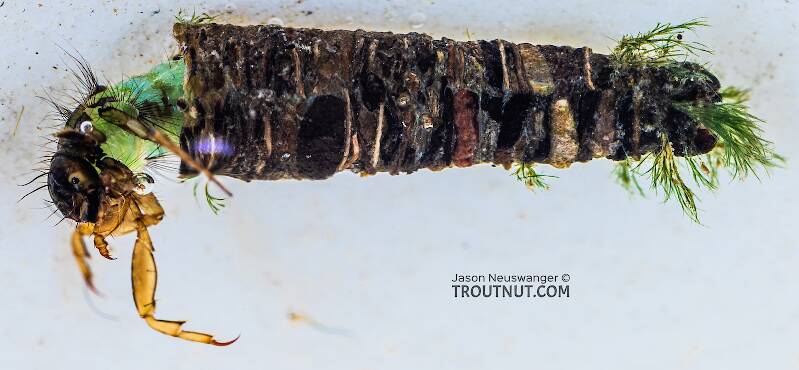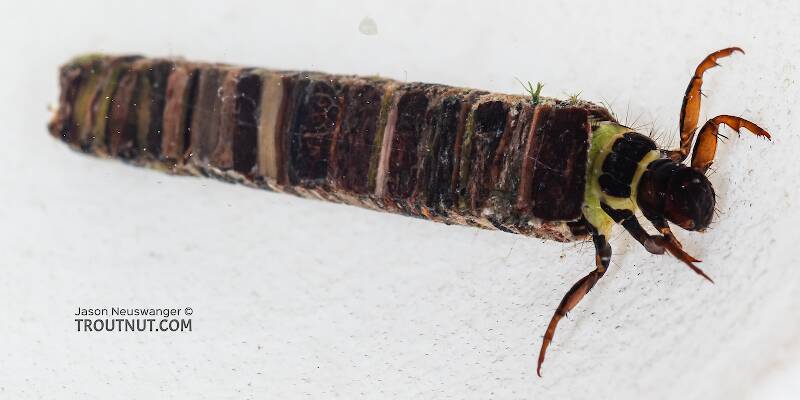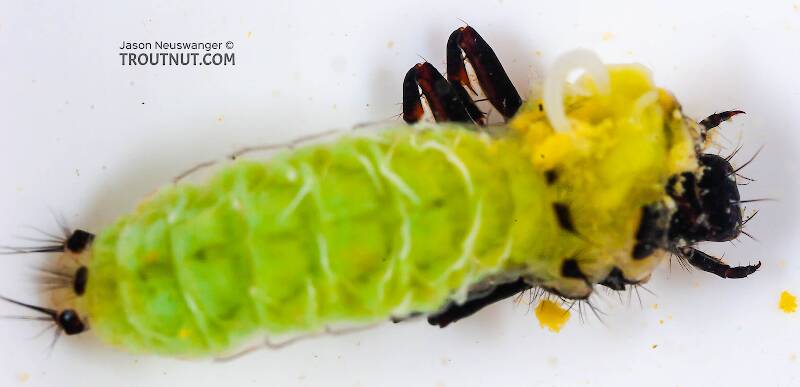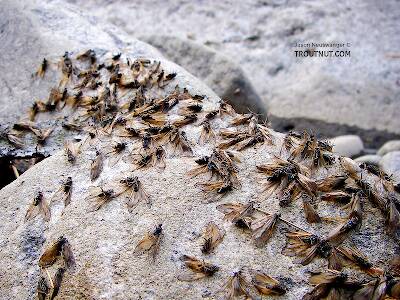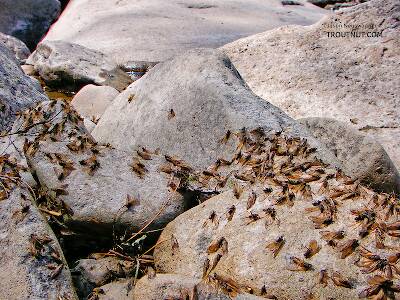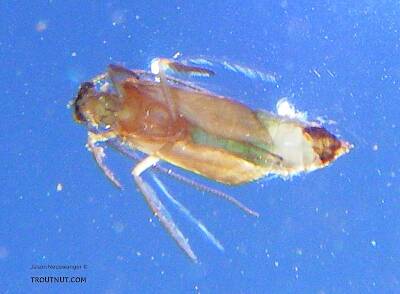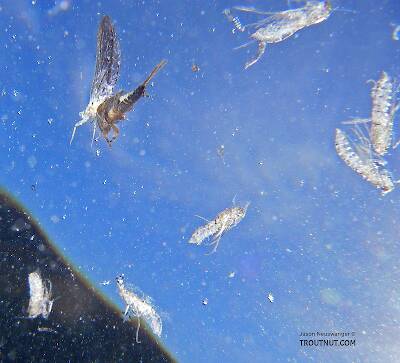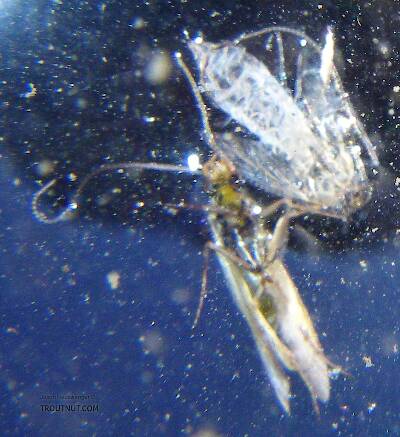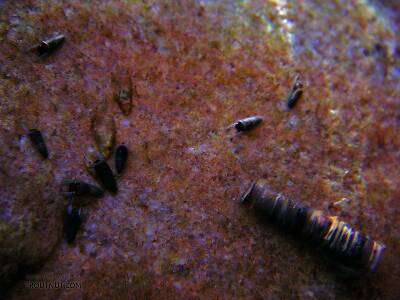
Blue-winged Olives
Baetis
Tiny Baetis mayflies are perhaps the most commonly encountered and imitated by anglers on all American trout streams due to their great abundance, widespread distribution, and trout-friendly emergence habits.
Featured on the forum

Troutnut is a project started in 2003 by salmonid ecologist Jason "Troutnut" Neuswanger to help anglers and
fly tyers unabashedly embrace the entomological side of the sport. Learn more about Troutnut or
support the project for an enhanced experience here.
Caddisfly Family Brachycentridae (Apple Caddis and Grannoms)
Brachycentrus is one of the most important caddisfly genera in America. Microsema is smaller and rarely, if ever, significant. Amiocentrus aspilus can be an important Western hatch.
Family Range
Hatching behavior
Brachycentridae caddisflies emerge on the surface. The pupae may drift for 10 to 20 feet on the surface, but once they escape their shucks they quickly take to the air, so pupal imitations are ideal.The emergence of most species is unusually concentrated, causing good rises of trout.
Egg-Laying behavior
Females may dive underwater or fall spent on the surface to lay their eggs.Larva & pupa biology
Diet: Algae, plankton
Shelter type: Plant matter or rock, arranged in circular or rectangular cross-section
Brachycentridae Fly Fishing Tips
Swisher and Richards note in Selective Trout that the males are a hook size smaller than the females. This may not be important during emergence, but one should certainly use the larger size during the all-female egg-laying.Specimens of the Caddisfly Family Brachycentridae
1 Female Adult
4 Adults
1 Pupa
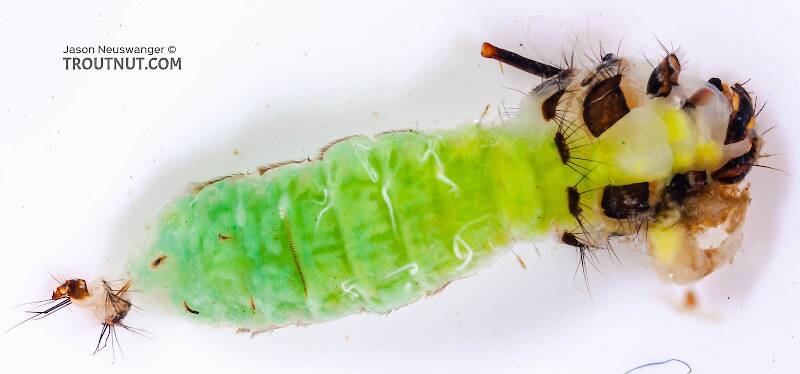
The green blob contained in this case is a pupa in the early stages of transformation from larva to the final stage we generally picture and imitate. This specimen and several like it were fixed to a rock I picked up, and each one had the front of its case sealed off, protecting the helpless pupa from predation. It's neat to see the insect part-way through such a radical transformation.
It was very hard to extract this thing from its case, so there's a bit of extra goo near the head from where I accidentally punctured it.
It was very hard to extract this thing from its case, so there's a bit of extra goo near the head from where I accidentally punctured it.
3 Larvae
2 Streamside Pictures of Brachycentridae Caddisflies:
4 Underwater Pictures of Brachycentridae Caddisflies:
Discussions of Brachycentridae
Brachycentrus americanus on the Lower Sacramento River California
Posted by Troutguide on Oct 29, 2016 in the species Brachycentrus americanus
Last reply on Oct 29, 2016 by Troutguide
I believe this is the species found in sometimes very large numbers on the Lower Sacramento River in the Redding area. Ten years ago it was present in such large numbers that fishing a fly on the bottom resulted in frequently hooking one of these caddis still in its case. Along with other aquatic insects their numbers have declined to a fraction of once seen. I don't believe the egg Sac dropped by the females to be olive , instread I have seen it to be a bright green. The females seem to oviposit close to the edge of flowing water and not midstream.
grannom caddis
56 replies
Posted by Goose on Sep 26, 2006 in the genus Brachycentrus
Last reply on Feb 1, 2016 by Martinlf
Hi All! I was reading through the site and I happened upon the Grannom (Apple) Caddis page, which made me wonder. Here in PA it is called The Mother's Day Caddis, I believe. Adults, which trout rarely feed on, are imitated with black or peacock herl bodies. The pupa, or emrgers I guess, we imitate with a wet fly. It has a peacock herl body and brown hackle for the legs, etc. in a size 14. Is this the same Grannon as the apple Grannom? Just curious!
I still get confused by these caddis and I'm trying to narrow down a list of caddis patterns and colors to cover the largest percentage of the hatches throughout the year.
I still get confused by these caddis and I'm trying to narrow down a list of caddis patterns and colors to cover the largest percentage of the hatches throughout the year.
caddis fly phonics guide
6 replies
Posted by SlapNuts on Oct 30, 2009
Last reply on Oct 31, 2009 by Taxon
I have trouble pronouncing the scientific names of most caddis flies. Does anyone know where I can find a phonics name list or guide.
Example Ephemerella ef uh mare el uh
Example Ephemerella ef uh mare el uh
Grannoms
11 replies
Posted by Grannom on Apr 29, 2007
Last reply on Apr 26, 2008 by Grannom
First, an introduction. I am 15 years old and live in Northwestern Pa. I have been reading the forums for quite a few years now, as they have helped me expand my knowledge.
I am interested in learning as much as possible about the grannom caddis. I would appreciate any information that you could offer about them, along with possible patterns and life cycle information. Thank you in advance.
Mike
I am interested in learning as much as possible about the grannom caddis. I would appreciate any information that you could offer about them, along with possible patterns and life cycle information. Thank you in advance.
Mike
What's happening here?
5 replies
Posted by Troutnut on Jun 5, 2007 in the genus Brachycentrus
Last reply on Jun 6, 2007 by Troutnut
Check out the two streamside pictures on my Brachycentrus page. I found these clusters of dead grannoms in a few different spots along a Catskill river on May 12th, while many members of (seemingly) the same species were in the air laying eggs and occasionally falling spent and being eaten by trout.
Have you ever seen these clusters? What's the explanation?
Have you ever seen these clusters? What's the explanation?
Start a Discussion of Brachycentridae
References
- LaFontaine, Gary. 1981. Caddisflies. The Lyons Press.
- Swisher, Doug and Carl Richards. 2000. Selective Trout. The Lyons Press.
Caddisfly Family Brachycentridae (Apple Caddis and Grannoms)
Taxonomy
Genus in Brachycentridae
AmiocentrusLittle Western Weedy Water Sedges
1
4
BrachycentrusGrannoms
7
74
MicrasemaLittle Grannoms
0
0
2 genera (Adicrophleps and Eobrachycentrus) aren't included.

